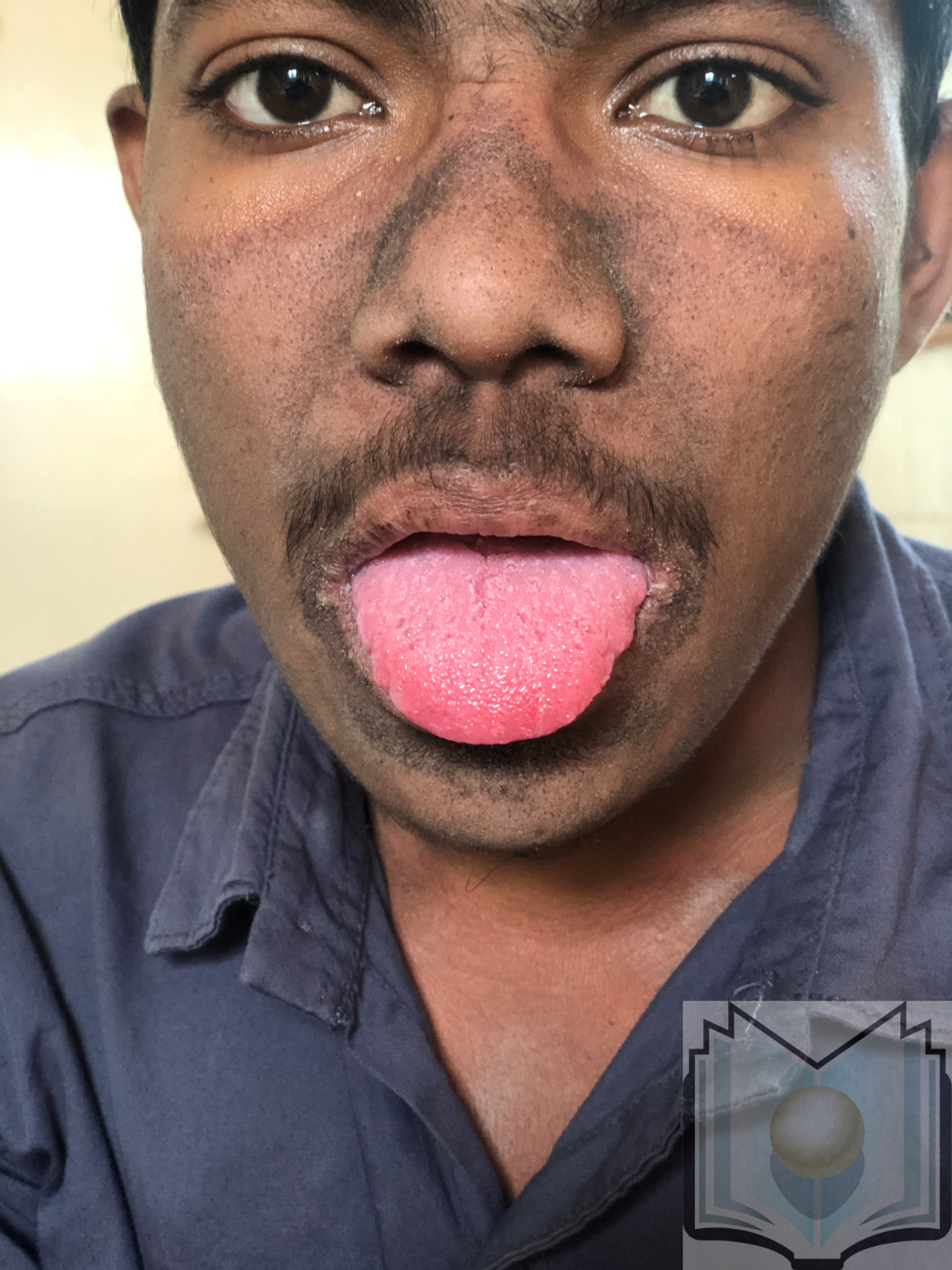[1]
Williams AC, Hill LJ, Ramsden DB. Nicotinamide, NAD(P)(H), and Methyl-Group Homeostasis Evolved and Became a Determinant of Ageing Diseases: Hypotheses and Lessons from Pellagra. Current gerontology and geriatrics research. 2012:2012():302875. doi: 10.1155/2012/302875. Epub 2012 Mar 21
[PubMed PMID: 22536229]
[2]
Hill LJ, Williams AC. Meat Intake and the Dose of Vitamin B(3) - Nicotinamide: Cause of the Causes of Disease Transitions, Health Divides, and Health Futures? International journal of tryptophan research : IJTR. 2017:10():1178646917704662. doi: 10.1177/1178646917704662. Epub 2017 May 3
[PubMed PMID: 28579801]
[4]
Eldridge AL. Comparison of 1989 RDAs and DRIs for Water-Soluble Vitamins. Nutrition today. 2004 Mar:39(2):88-93
[PubMed PMID: 15100498]
[5]
Segula D, Banda P, Mulambia C, Kumwenda JJ. Case report--A forgotten dermatological disease. Malawi medical journal : the journal of Medical Association of Malawi. 2012 Mar:24(1):19-20
[PubMed PMID: 23638264]
Level 3 (low-level) evidence
[6]
Savvidou S. Pellagra: a non-eradicated old disease. Clinics and practice. 2014 Mar 27:4(1):637. doi: 10.4081/cp.2014.637. Epub 2014 Apr 28
[PubMed PMID: 24847436]
[7]
Gasperi V, Sibilano M, Savini I, Catani MV. Niacin in the Central Nervous System: An Update of Biological Aspects and Clinical Applications. International journal of molecular sciences. 2019 Feb 23:20(4):. doi: 10.3390/ijms20040974. Epub 2019 Feb 23
[PubMed PMID: 30813414]
[8]
Periyasamy S, John S, Padmavati R, Rajendren P, Thirunavukkarasu P, Gratten J, Vinkhuyzen A, McRae A, Holliday EG, Nyholt DR, Nancarrow D, Bakshi A, Hemani G, Nertney D, Smith H, Filippich C, Patel K, Fowdar J, McLean D, Tirupati S, Nagasundaram A, Gundugurti PR, Selvaraj K, Jegadeesan J, Jorde LB, Wray NR, Brown MA, Suetani R, Giacomotto J, Thara R, Mowry BJ. Association of Schizophrenia Risk With Disordered Niacin Metabolism in an Indian Genome-wide Association Study. JAMA psychiatry. 2019 Oct 1:76(10):1026-1034. doi: 10.1001/jamapsychiatry.2019.1335. Epub
[PubMed PMID: 31268507]
[9]
Carpenter KJ. The relationship of pellagra to corn and the low availability of niacin in cereals. Experientia. Supplementum. 1983:44():197-222
[PubMed PMID: 6357846]
[10]
Seal AJ, Creeke PI, Dibari F, Cheung E, Kyroussis E, Semedo P, van den Briel T. Low and deficient niacin status and pellagra are endemic in postwar Angola. The American journal of clinical nutrition. 2007 Jan:85(1):218-24
[PubMed PMID: 17209199]
[11]
Monteiro JP, da Cunha DF, Filho DC, Silva-Vergara ML, dos Santos VM, da Costa JC Jr, Etchebehere RM, Gonçalves J, de Carvalho da Cunha SF, Jordão AA, Chiarello PG, Vannucchi H. Niacin metabolite excretion in alcoholic pellagra and AIDS patients with and without diarrhea. Nutrition (Burbank, Los Angeles County, Calif.). 2004 Sep:20(9):778-82
[PubMed PMID: 15325687]
[12]
Allen B, Orfila C. The Availability and Nutritional Adequacy of Gluten-Free Bread and Pasta. Nutrients. 2018 Sep 25:10(10):. doi: 10.3390/nu10101370. Epub 2018 Sep 25
[PubMed PMID: 30257431]
[13]
Zhao C, Liu T, Ma C, Li H, Li Z, Guo J. Azathioprine-induced pellagra in neuromyelitis optica: A case report and review of literature. Multiple sclerosis and related disorders. 2018 Oct:25():104-107. doi: 10.1016/j.msard.2018.07.038. Epub 2018 Jul 21
[PubMed PMID: 30059893]
Level 3 (low-level) evidence
[14]
Das R, Parajuli S, Gupta S. A rash imposition from a lifestyle omission: a case report of pellagra. The Ulster medical journal. 2006 Jan:75(1):92-3
[PubMed PMID: 16457414]
Level 3 (low-level) evidence
[15]
Usman AB, Emmanuel P, Manchan DB, Chinyere A, Onimisi OE, Yakubu M, Hirayama K. Pellagra, a re-emerging disease: a case report of a girl from a community ravaged by insurgency. The Pan African medical journal. 2019:33():195. doi: 10.11604/pamj.2019.33.195.17494. Epub 2019 Jul 12
[PubMed PMID: 31692657]
Level 3 (low-level) evidence
[17]
Ramirez-Cabral NYZ, Kumar L, Shabani F. Global alterations in areas of suitability for maize production from climate change and using a mechanistic species distribution model (CLIMEX). Scientific reports. 2017 Jul 19:7(1):5910. doi: 10.1038/s41598-017-05804-0. Epub 2017 Jul 19
[PubMed PMID: 28724952]
[18]
Malfait P, Moren A, Dillon JC, Brodel A, Begkoyian G, Etchegorry MG, Malenga G, Hakewill P. An outbreak of pellagra related to changes in dietary niacin among Mozambican refugees in Malawi. International journal of epidemiology. 1993 Jun:22(3):504-11
[PubMed PMID: 8359968]
[19]
Matapandeu G, Dunn SH, Pagels P. An Outbreak of Pellagra in the Kasese Catchment Area, Dowa, Malawi. The American journal of tropical medicine and hygiene. 2017 May:96(5):1244-1247. doi: 10.4269/ajtmh.16-0423. Epub 2017 May 13
[PubMed PMID: 28219990]
[20]
Mponda K, Masenga J. Skin diseases among elderly patients attending skin clinic at the Regional Dermatology Training Centre, Northern Tanzania: a cross-sectional study. BMC research notes. 2016 Feb 22:9():119. doi: 10.1186/s13104-016-1933-6. Epub 2016 Feb 22
[PubMed PMID: 26905256]
Level 2 (mid-level) evidence
[21]
Schmid MA, Salomeyesudas B, Satheesh P, Hanley J, Kuhnlein HV. Intervention with traditional food as a major source of energy, protein, iron, vitamin C and vitamin A for rural Dalit mothers and young children in Andhra Pradesh, South India. Asia Pacific journal of clinical nutrition. 2007:16(1):84-93
[PubMed PMID: 17215184]
[22]
Banjong O, Menefee A, Sranacharoenpong K, Chittchang U, Eg-kantrong P, Boonpraderm A, Tamachotipong S. Dietary assessment of refugees living in camps: a case study of Mae La Camp, Thailand. Food and nutrition bulletin. 2003 Dec:24(4):360-7
[PubMed PMID: 14870623]
Level 3 (low-level) evidence
[23]
Schüpbach R, Wegmüller R, Berguerand C, Bui M, Herter-Aeberli I. Micronutrient status and intake in omnivores, vegetarians and vegans in Switzerland. European journal of nutrition. 2017 Feb:56(1):283-293. doi: 10.1007/s00394-015-1079-7. Epub 2015 Oct 26
[PubMed PMID: 26502280]
[24]
Darnton-Hill I. Public Health Aspects in the Prevention and Control of Vitamin Deficiencies. Current developments in nutrition. 2019 Sep:3(9):nzz075. doi: 10.1093/cdn/nzz075. Epub 2019 Jun 21
[PubMed PMID: 31598578]
[25]
Kvols LK, Reubi JC. Metastatic carcinoid tumors and the malignant carcinoid syndrome. Acta oncologica (Stockholm, Sweden). 1993:32(2):197-201
[PubMed PMID: 8323761]
[26]
Seow HF, Bröer S, Bröer A, Bailey CG, Potter SJ, Cavanaugh JA, Rasko JE. Hartnup disorder is caused by mutations in the gene encoding the neutral amino acid transporter SLC6A19. Nature genetics. 2004 Sep:36(9):1003-7
[PubMed PMID: 15286788]
[27]
Wan P, Moat S, Anstey A. Pellagra: a review with emphasis on photosensitivity. The British journal of dermatology. 2011 Jun:164(6):1188-200. doi: 10.1111/j.1365-2133.2010.10163.x. Epub 2011 May 5
[PubMed PMID: 21128910]
[28]
Gurd FB. A HISTOLOGICAL STUDY OF THE SKIN LESIONS OF PELLAGRA. The Journal of experimental medicine. 1911 Jan 5:13(1):98-114
[PubMed PMID: 19867399]
[29]
Cao S, Wang X, Cestodio K. Pellagra, an Almost-Forgotten Differential Diagnosis of Chronic Diarrhea: More Prevalent Than We Think. Nutrition in clinical practice : official publication of the American Society for Parenteral and Enteral Nutrition. 2020 Oct:35(5):860-863. doi: 10.1002/ncp.10418. Epub 2019 Oct 9
[PubMed PMID: 31599018]
[30]
ABDALLA A, GAD-EL-MAWLA N. Electro-cardiographic changes in pellagra. The Journal of the Egyptian Medical Association. 1962:45():909-12
[PubMed PMID: 14010565]
[31]
Terada N, Kinoshita K, Taguchi S, Tokuda Y. Wernicke encephalopathy and pellagra in an alcoholic and malnourished patient. BMJ case reports. 2015 Oct 21:2015():. doi: 10.1136/bcr-2015-209412. Epub 2015 Oct 21
[PubMed PMID: 26490997]
Level 3 (low-level) evidence
[32]
Ho EY, Mathy C. Functional abdominal pain causing Scurvy, Pellagra, and Hypovitaminosis A. F1000Research. 2014:3():35. doi: 10.12688/f1000research.3-35.v1. Epub 2014 Feb 4
[PubMed PMID: 24715978]
[33]
Park YK, Sempos CT, Barton CN, Vanderveen JE, Yetley EA. Effectiveness of food fortification in the United States: the case of pellagra. American journal of public health. 2000 May:90(5):727-38
[PubMed PMID: 10800421]
Level 3 (low-level) evidence
[34]
Dwyer JT, Wiemer KL, Dary O, Keen CL, King JC, Miller KB, Philbert MA, Tarasuk V, Taylor CL, Gaine PC, Jarvis AB, Bailey RL. Fortification and health: challenges and opportunities. Advances in nutrition (Bethesda, Md.). 2015 Jan:6(1):124-31. doi: 10.3945/an.114.007443. Epub 2015 Jan 15
[PubMed PMID: 25593151]
Level 3 (low-level) evidence
[35]
Flynn A, Hirvonen T, Mensink GB, Ocké MC, Serra-Majem L, Stos K, Szponar L, Tetens I, Turrini A, Fletcher R, Wildemann T. Intake of selected nutrients from foods, from fortification and from supplements in various European countries. Food & nutrition research. 2009 Nov 12:53():. doi: 10.3402/fnr.v53i0.2038. Epub 2009 Nov 12
[PubMed PMID: 20011225]
[36]
Steyn NP, Wolmarans P, Nel JH, Bourne LT. National fortification of staple foods can make a significant contribution to micronutrient intake of South African adults. Public health nutrition. 2008 Mar:11(3):307-13
[PubMed PMID: 17610752]
[37]
Gayer J, Smith G. Micronutrient fortification of food in Southeast Asia: recommendations from an expert workshop. Nutrients. 2015 Jan 19:7(1):646-58. doi: 10.3390/nu7010646. Epub 2015 Jan 19
[PubMed PMID: 25608937]
[38]
Serdula MK, Nichols EK, Aburto NJ, Masa'd H, Obaid B, Wirth J, Tarawneh M, Barham R, Hijawi B, Sullivan KM, Jordan Fortification Working Group, Jordan Fortification Working Group. Micronutrient status in Jordan: 2002 and 2010. European journal of clinical nutrition. 2014 Oct:68(10):1124-8. doi: 10.1038/ejcn.2014.100. Epub 2014 Jul 2
[PubMed PMID: 24986824]
[39]
Prousky JE. Pellagra may be a rare secondary complication of anorexia nervosa: a systematic review of the literature. Alternative medicine review : a journal of clinical therapeutic. 2003 May:8(2):180-5
[PubMed PMID: 12777163]
Level 1 (high-level) evidence




